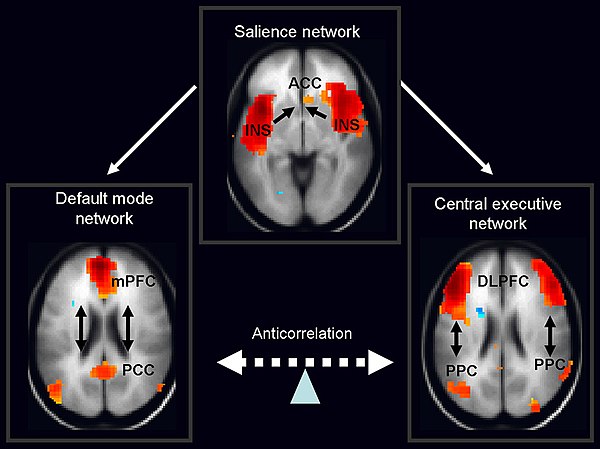NOT MY FAULT, MY DEFAULT!

By: Dr. Theresa Nicholas
Categories:
NOT MY FAULT, MY DEFAULT!

Daydreaming, also referred to as ‘zoning out’, is one of the numerous debilitating and often misunderstood symptom of ADHD and also affects many people with ASD. These terms are often used pejoratively because in common use, they carry meanings associated with boredom, time wasting and laziness. Anyone with a neuro-developmental condition is likely to have a long history of hearing the words, “stop daydreaming”, “pay attention”, “you’re being lazy”, “how many times do I have to tell you…?!” These phrases convey assumptions that the person affected is choosing not to try hard enough or simply allowing themselves to be sluggish.
In fact, there is extensive evidence to suggest that ‘daydreaming’ is what happens when a group of brain regions referred to as the Default Mode Network (DMN) become most active, which is when we are at rest.Therefore, rest does not equate to inactivity!
The DMN is thought to be activated when we focus our attention towards internal mental-state processes, such as self-referential processing (who am I? What kind of person am I?), autobiographical memory retrieval (I remember when…), imagining the future (If I win the lottery…) and interoception (an internal sense of our body). The DMN is thought to underpin much of our creative capacity as humans. When we are focused on external tasks, the DMN is deactivated and another network is activated to allow this, the Executive Control Network (ECN).

The activation and deactivation of the DMN is controlled by another network referred to as the Salience Network (SN). The SN decides what should be attended to and either activates the DMN or activates the ECN, but both cannot be active simultaneously (referred to as anticorrelation). Think of it like putting your shoes on stood up; you have to have the left foot off the floor to get the right shoe on. If both are off the floor you will fall overand if both feet are on the floor, you can’t get the shoes on. The diagram below shows the brain regions involved in each of these 3 networks.
The adaptive capacity of the DMN is evident in the way that human beings need to integrate information about the past and present in relation to themselves in order to attend to the self, develop self-awareness and insight, predict and imagine the future. But, the ability to use the information generated by the DMN in our daily lives requires it to switch off so that it can be made use of by the ECN for purposes of survival, safety and cooperative social functioning.
DMN Differences and Difficulties
For most people, these three networks function in a synchronised fashion, allowing salient stimuli to determine whether the focus of attention is, broadly speaking, directed inwards or outwards.However, for people who are neuro-diverse, the synchronisation of these networks is different. In ADHD, the DMN is overconnected and over-active which prevents the ECN from activating sufficiently. Hence, the familiar tendency to drift into internal thoughts and ideas with accompanying difficulties attending to external stimuli and tasks. It is also thought that an over-active DMN may interfere with emotional processing as down-regulation of the DMN is required for regulating emotions (Sheline et al., 2009).

In ASD it is thought that these networks are also relevant but in slightly different ways. Rather than being associated with DMN activity, the issue is reduced connectivity, and reduced activity,between some of regions in the DMN (Menon, 2018). Although these differences can interfere with attention in people with ASD, they also seem to be associated with self-awareness and self-other awareness, which creates further challenges in social contexts.
Heightened activity in the DMN has also been linked to anxiety and depression, possibly because the tendency to ruminate and focus attention on thoughts of past and present problems and what this means to our sense of self and expectations of the future takes on a negative bias.Negative thinking seems to further activate the DMN in a vicious cycle of distressing rumination.Hence, the degree of comorbidity of other mental health problems in people with neuro developmental conditions seems unsurprising, when considered in the context of alterations in DMN connectivity and function. Further, considering that the misuse of illicit substances has been shown to suppress DMN activity (Sutherland et al., 2012), it is understandable how dependency can develop in people with neurodevelopmental conditions and mental health difficulties.
Switching off the DMN
At this point, one might ask how, if the DMN can be so problematic, do we switch it off?This is an important question and a fundamental concept pertinent to managing the anxiety and mood instability generated by many conditions. Sleep problems are an additional issue for many people with ASD and ADHD and sleep deprivation, paradoxically, has been shown to reduce DMN activity (De Havas, Parimal, Soon& Chee, 2012); nonetheless, this is of little benefit due to the resulting reduced activity of the CEN.Further, although it is far from advisable to smoke, nicotine reduces DMN activity (Tanabe et al., 2011) and is a better alternative to illicit drugs.

Touch
There is evidence that touch can initiate brain activity associated with attention shifting from the inner to the outer world, which is controlled by reduced activity in the DMN (Strauss et al., 2019). This is likely to be adaptive in terms of social experience, cooperation, which is central to our existence as primates and of fundamental importance to our sense of belonging and safety. The kind I’ve touched that an individual finds comforting is of course contextual and a very personal thing. Effective modes of touch might be that involved in a hug from a friend or relative, the feel of a comforting blanket or item of clothing, the physical sensations generated by a warm shower or the feel of our feet sinking into sand.
Meditation
Meditation is the practice of maintaining attention on immediate moment-by-moment experience and away from distractions, such as the mind wanderings linked to the DMN. Research has shown that different modes of meditation, do indeed reduce activity in the DMN. The use of focused attention or phrase repetition in meditation seems to have a de-activating effect upon the DMN, which increases with greater experience of meditation. Meditation has been shown to improve memory and attention, in addition to alleviating pain, anxiety and depression (Garrison et al., 2015).
Awe and Hypnosis
An interesting research study has indicated that when people experience feelings of ‘awe’ through the immersive perception of a broad range of stimuli the DMN is down regulated (Van Elk et. al., 2019). Similarly, hypnosis has also been shown to be associated with reduced DMN activity (Deeley, et. al., 2012). Curiously, pro-social behaviour, such as generosity and careis seen to increase after exposure to awe inspiring landscapes, which is thought to be a consequence of the brain generating a ‘smaller’ sense of self.
Medication
The use of stimulants to treat ADHD can be highly effective in reducing DMN activation. The use of stimulants to deactivate the brain region may seem counterintuitive. However, if inhibitory pathways are under-active and these are required to deactivate the DMN, then activating these pathways will reduce DMN activity. It is important to note that not all individuals with ADHD respond well to medication. There are alternatives to stimulant medication which are also affective through different neural mechanisms.
Understanding the mechanism of brain functioning that underlies some of the most problematic symptoms of neurodevelopmental conditions provides us with clues to finding ways to managing them. The alternative may be the risk of finding strategies anecdotally that are of detrimental to other aspects of mental and physical health.
References
Deeley, Q., Oakley, D. A., Toone, B., Giampietro, V., Brammer, M. J., Williams, S. C., & Halligan, P. W. (2012). Modulating the default mode network using hypnosis. International Journal of Clinical and Experimental Hypnosis, 60(2), 206-228.
De Havas, J. A., Parimal, S., Soon, C. S., & Chee, M. W. (2012). Sleep deprivation reduces default mode network connectivity and anti-correlation during rest and task performance. Neuroimage, 59(2), 1745-1751.
Garrison, K. A., Zeffiro, T. A., Scheinost, D., Constable, R. T., & Brewer, J. A. (2015). Meditation leads to reduced default mode network activity beyond an active task. Cognitive, Affective, &Behavioral Neuroscience, 15(3), 712-720.
Menon, V. (2018). The triple network model, insight, and large-scale brain organization in autism. Biological psychiatry, 84(4), 236-238.
Sheline, Y. I., Barch, D. M., Price, J. L., Rundle, M. M., Vaishnavi, S. N., Snyder, A. Z., … &Raichle, M. E. (2009). The default mode network and self-referential processes in depression. Proceedings of the National Academy of Sciences, 106(6), 1942-1947.
Sutherland, M. T., McHugh, M. J., Pariyadath, V., & Stein, E. A. (2012). Resting state functional connectivity in addiction: Lessons learned and a road ahead. Neuroimage, 62(4), 2281-2295.
Strauss, T., Kämpe, R., Hamilton, J. P., Olausson, H., Rottstädt, F., Raue, C., &Croy, I. (2019). Deactivation of default mode network during touch. Scientific reports, 9(1), 1-11.
Tanabe, J., Nyberg, E., Martin, L. F., Martin, J., Cordes, D., Kronberg, E., &Tregellas, J. R. (2011). Nicotine effects on default mode network during resting state. Psychopharmacology, 216(2), 287-295.
Van Elk, M., Arciniegas Gomez, M. A., van der Zwaag, W., Van Schie, H. T., & Sauter, D. (2019). The neural correlates of the awe experience: Reduced default mode network activity during feelings of awe. Human brain mapping, 40(12), 3561-3574.
